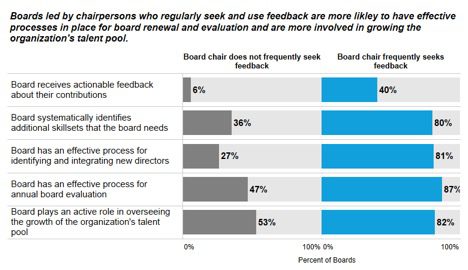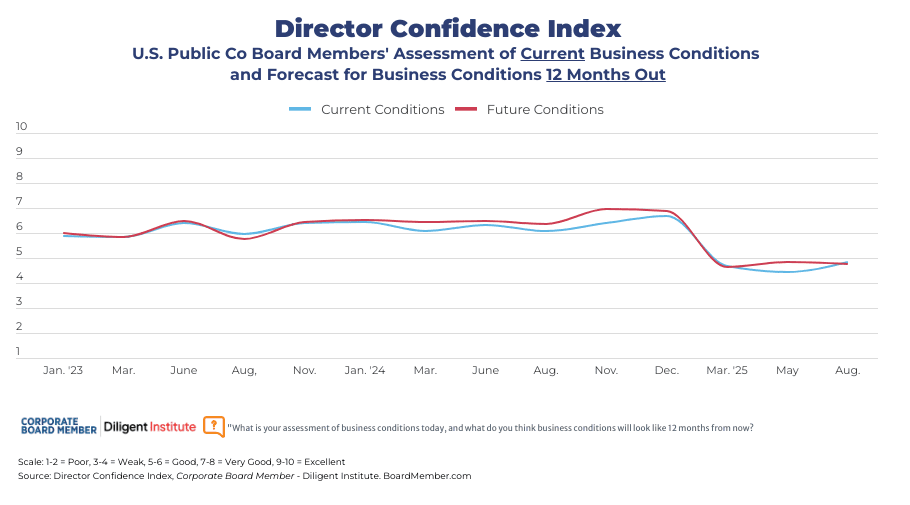
This is the second part of a two-part series.
Through our ongoing work with boards, we began to ask the question: Are there specific aspects of a board chair role that, if demonstrated at a very high level, are most likely to make the difference between a good board and a great one?
We found that the answer is yes, there are actually two. In the previous article in this series we focused on the first aspect, the board chair’s ability to establish a very high and consistent level of trust with the other directors and the impact this has on specific areas of board functioning.
The second factor that significantly increases the likelihood of a high-functioning board is a chairperson who actively and routinely seeks and uses feedback about their effectiveness in role. When we developed our Board Development Survey* and the Great Boards benchmark norm, we found that members who feel strongly that their chairperson seeks and utilizes feedback were significantly more likely to be serving on a highly effective board. This simple (but not necessarily easy) action on the part of the chair, when consistently demonstrated, becomes part of a virtuous cycle impacting multiple areas that enable the board to evolve. Board chairs who proactively model this behavior are substantially more likely to lead boards that excel at board renewal.
For example, when board chairs are actively seeking and using feedback about their leadership impact on the board, it is significantly more likely that each director is receiving annual performance feedback regarding how to maximize their contribution and that this feedback is specific, constructive, and actionable. The boards led by these chairs are also considerably more apt to have a systematic and efficient process for identifying additional skillsets needed on the board moving forward—and these boards are more likely to have highly effective processes for identifying, cultivating, and integrating new directors who can bring the necessary skillsets.[1]
While virtually all boards engage in an annual board evaluation process at this point, it is more likely that these evaluations are viewed as effective and identify real areas for improvement, versus a more rote, check-the-box approach. Fundamentally, board chairs who model obtaining and using feedback as a vital part of maximizing their ongoing performance in their role tend to set the stage (and expectation) for those around them to do the same. It is intriguing to note that in such cases this focus on evolution and renewal does not stop with the board itself. These individuals are also significantly more likely to lead boards that are regularly engaged in succession planning for the CEO and other mission-critical roles, ensuring that the organization is well prepared for future leadership transitions.[2]
Boards continue to face an increasingly complex and rapidly changing landscape of risks and opportunities, placing greater demands on directors and the board as a whole. However, through simple and consistent actions, the board chair can help maximize the odds that the board is continuing to evolve to bring its best to the company and its stakeholders.

*RHR’s Board Development Survey, designed to assist boards in identifying opportunities to improve their effectiveness, consists of 55 items across seven dimensions of governance. The original database was compiled from the responses of directors who collectively serve on 120 boards of mid-cap and large-cap companies. Our research shows that the strongest boards have strong chair leadership, healthy board dynamics characterized by candid debate, and a shared understanding of the organization’s financial, regulatory, and operational risk-tolerance levels. For the full survey results, please contact kgilson@rhrinternational.com.
[1] The correlations between the behaviors in this section and the board chair seeking and utilizing feedback were all positive and significant, ranging from r =.46 to r = .50
[2] The correlations between the behaviors in this section and the board chair seeking and utilizing feedback were all positive and significant, ranging from r =.38 to r = .50





